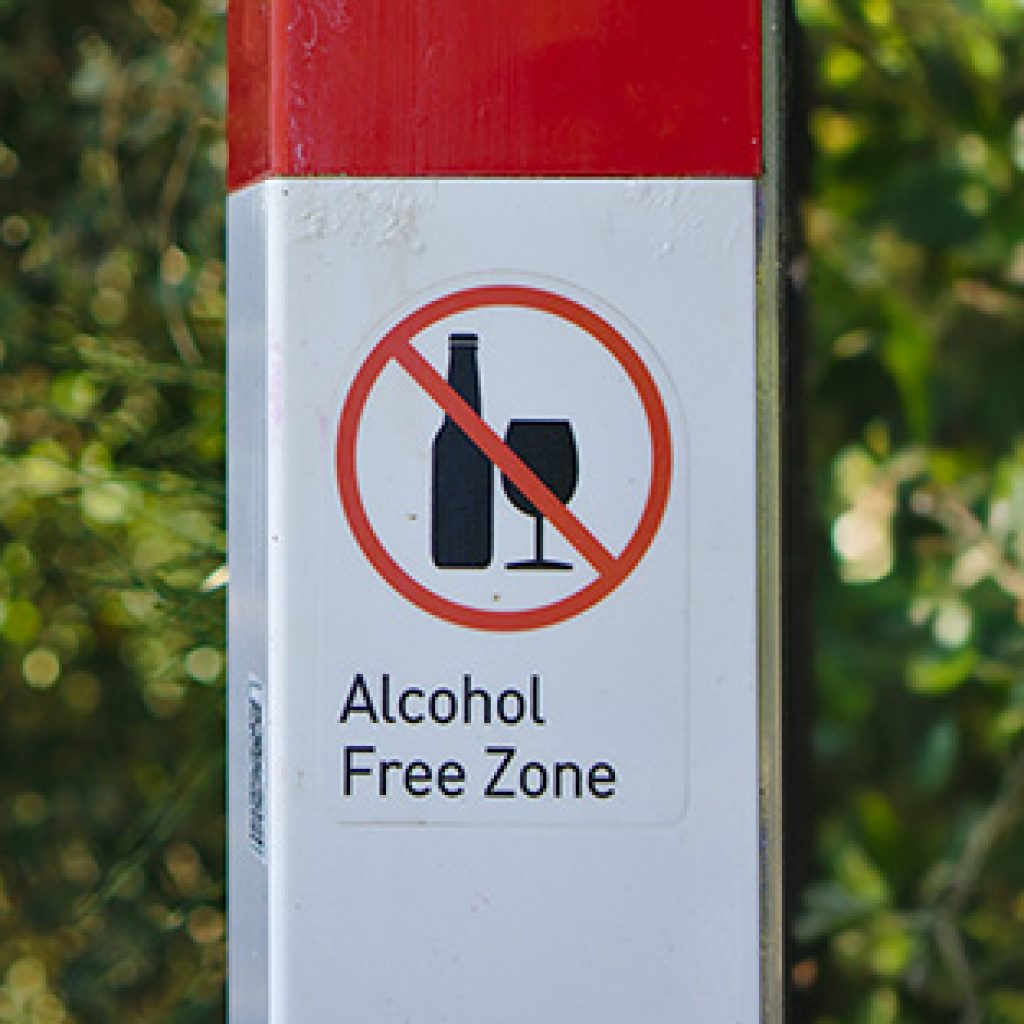Re-Think Drinking this July 4th
As the summer season kicks into high gear, many of us look forward to enjoying outdoor activities and relaxing with a refreshing drink. For some, a refreshing drink is synonymous with an alcoholic beverage. BACtrack Mobile and BACtrack Vio Smartphone Breathalyzers have been tracking alcohol consumption to understand annual drinking trends. Their data has provided some interesting insights regarding summer drinking trends.
Six key insights include:
- The Summer Solstice and July 4th emerge as the booziest days of summer, with an average Blood Alcohol Concentration (BAC) of 0.082%.
- Over 47% of days throughout the summer months (June, July, and August) exhibit an average BAC above 0.060%, which is higher than the national average throughout the year.
- Saturdays dominate the list of the 13 biggest drinking days of summer, with average BACs ranging from 0.075% to 0.082%.
- Americans drink the most in June, with an average BAC of 0.066%, while July and August tie with an average BAC of 0.063%.
- Five summer days surpass the legal limit of 0.080% for average BAC: June 7, June 14, June 21, July 3, and July 4.
- Tuesday, August 5th claims the top spot of the most sober days of summer with the lowest average BAC, registering at 0.034%. It is closely followed by Monday, July 21st, with an average BAC of 0.039%.
Alcohol has a significant impact on global health and society. In the United States, alcohol ranks the fourth leading risk factor for premature death with more than 140,000 people (approximately 97,000 men and 43,000 women) who die from alcohol related causes. While, the first is tobacco, the second is poor diet and physical inactivity, and the third is illegal drugs. The harm associated with alcohol consumption encompass various conditions, including coronary heart disease, cancer, tuberculosis, motor vehicle accidents, liver cirrhosis, and suicide. Injuries, in general, contribute the most to the overall burden attributed to alcohol. The volume of drinking shows specific dose-response relationships with most disease outcomes.
Recently, the World Health Organization (WHO) published a statement in The Lancet Public Health Journal, emphasizing that no amount of alcohol is safe for our health. They highlight that alcohol is not merely a beverage; it is a toxic and dependence-producing substance. The International Agency for Research on Cancer classified alcohol as a Group 1 carcinogen decades ago, placing it in the highest risk group alongside asbestos, radiation, and tobacco. Regardless of the quality or price of the beverage, the compound ethanol found in alcohol breaks down in the body, posing a risk of developing cancer. Alcohol consumption is a risk factor for at least seven types of cancer, including bowel and breast cancer. The new WHO statement clarifies that currently available evidence cannot identify a point at which the carcinogenic effects of alcohol “switch off.”
The drinking patterns adopted by individuals also play a crucial role on health and society. More specifically, heavy episodic drinking has been linked to coronary heart disease, motor vehicle accidents, suicide, and other injuries. While moderate drinking may have cardiovascular benefits for some individuals, it has also been associated with an increased risk of cancer and other diseases. In addition to health risks, alcohol consumption extends its impact on a wide range of social problems. While a direct causal link between alcohol consumption and violence is plausible, the relationship becomes more intricate when considering issues such as divorce, child abuse, and work-related problems. Alcohol-related crime, domestic violence, family dysfunction, traffic accidents, and workplace issues are examples of negative impacts that affect not only the drinker but also others in society. Furthermore, disadvantaged and vulnerable populations are particularly affected, as the harms of alcohol are more pronounced for poorer individuals and their families. It is crucial to recognize the broader impact of alcohol harm on societies and take action, as it is clear that alcohol contributes significantly to both social and health burdens.
In order to address this significant health concern, experts posit that we need comprehensive strategies to raise awareness about the health concerns. Some examples outlined to raise awareness include: labeling alcoholic beverages with cancer-related health information, similar to tobacco products, and empowering and equipping healthcare professionals to educate their patients about the risks of alcohol and cancer. In 2019 the National Institute of Health launched the Rethink Drinking campaign. This website serves as a valuable, research-based information hub for the public to assess their drinking habits and to understand how they may be affecting their health.
As we work to raise public awareness on the impacts of alcohol use. More and more people are becoming conscious drinkers. Being a conscious drinker means being mindful and intentional about your relationship with alcohol. It involves having an awareness of how alcohol affects your body, mind, and overall well-being, and making conscious choices regarding your alcohol consumption. Outlined below are 8 key aspects of conscious drinkers.

Self-awareness: A conscious drinker is self-aware and understands their personal relationship with alcohol. They take the time to reflect on their drinking habits, motivations, and the impact alcohol has on their physical and mental health.

Moderation or Abstaining: Conscious drinkers strive for moderation or intentionally abstain from drinking alcohol. They make informed decisions about when and how much to drink, ensuring that it aligns with their personal boundaries and health goals.

Informed choices: Being a conscious drinker involves seeking information and being knowledgeable about the effects of alcohol. This includes understanding the potential risks, health implications, and recommended guidelines for safe alcohol consumption.

Set boundaries: Conscious drinkers establish clear boundaries for themselves regarding alcohol consumption. They know when to say no and are comfortable declining a drink if it doesn’t align with their goals or values.

Take breaks: A conscious drinker recognizes the importance of taking breaks from alcohol. They may choose to have alcohol-free days, weeks, or months to reset their relationship with alcohol, evaluate their habits, and prioritize their well-being.

Seek support: Conscious drinkers are open to seeking support if they feel their relationship with alcohol is becoming unhealthy or if they need assistance in making positive changes. This can include talking to trusted friends or family, seeking professional guidance from a licensed clinician, or joining support groups.

Experiment with alternatives: Conscious drinkers explore and enjoy non-alcoholic alternatives to traditional alcoholic beverages. They appreciate the growing variety of alcohol-free options available and embrace them as enjoyable substitutes. In 2022, the non-alcoholic drink market grew by 7% indicating more and more people are experimenting with alternatives.

Non-judgmental approach: Being a conscious drinker involves adopting a non-judgmental attitude towards others’ choices regarding alcohol. They respect diverse perspectives and understand that everyone has their own unique relationship with alcohol.
As we dive into holiday celebrations and summer BBQ’s here are some ideas to support conscious drinking.

Bring your own non-alcoholic refreshing drinks: Take control of your drink choices by bringing your own non-alcoholic options. You can opt for refreshing drinks like sparkling water, flavored sodas, creative mocktails, or alcohol-free beer or wine alternatives.

Engage in activities: Get involved in activities that keep you occupied and take your mind off drinking. Participate in games, conversations, or help with food preparations. By staying engaged, you’re less likely to focus on the absence of alcohol.

Find a sober buddy: If you have a friend or family member who doesn’t drink, team up with them. Stick together and support each other in your decision not to drink. Having someone who understands your choice can make the experience more enjoyable.

Practice saying “no”: Be prepared for situations where others may offer you a drink. Practice polite and assertive ways to decline, such as saying, “No, thank you. I’m enjoying my non-alcoholic drink,” or “I’m taking a break from alcohol for now.” You can also practice simple saying no without the need for explanation.

Focus on socializing: Use these gatherings as an opportunity to connect with others and engage in meaningful conversations. Building connections and enjoying the company of friends and family can enhance your experience and reduce the desire for alcohol.

Plan alternative activities: If you anticipate that the focus of the event will heavily revolve around drinking, consider planning alternative activities. Suggest playing outdoor games, organizing a movie night, or going for a hike or walk.
The reality is, the less you drink, the better your health. Dr. Carina Ferreira-Borges, acting Unit Lead for Noncommunicable Disease Management and Regional Advisor for Alcohol and Illicit Drugs in the WHO Regional Office for Europe, highlights the undeniable truth, “We cannot talk about a so-called safe level of alcohol use. It doesn’t matter how much you drink—the risk to the drinker’s health starts from the first drop of any alcoholic beverage. The only thing that we can say for sure is that the more you drink, the more harmful it is – or, in other words, the less you drink, the safer it is.” This summer we encourage to practice conscious drinking in support of your health and well-being.
References
Akers, W. (2020, April 10). What is mindful drinking? how it can help your mental health. Healthline. https://www.healthline.com/health-news/what-is-mindful-drinking
Alcohol & Public Policy Group. (2010). Alcohol: No ordinary commodity – a summary of the second edition. Addiction, 105(5), 769–779. https://doi.org/10.1111/j.1360-0443.2010.02945.x
BACtrack. (2015). Bactrack reveals Americans’ summer drinking habits. BACtrack. https://www.bactrack.com/blogs/breathalyzer/34295045-bactrack-reveals-americans-summer-drinking-habits#:~:text=The%20Summer%20Solstice%2C%20the%20official,average%20throughout%20the%20entire%20year.
Dingwall, K. (2022). The no-alcohol drinks market surpassed $11 billion in 2022. Forbes. https://www.forbes.com/sites/katedingwall/2022/12/23/the-no-alcohol-drinks-market-surpassed-11b-in-2022/?sh=29bc9783689a
U.S. Department of Health and Human Services. (2023). Understanding alcohol’s adverse impact on health. National Institute on Alcohol Abuse and Alcoholism. https://www.niaaa.nih.gov/publications/brochures-and-fact-sheets/understanding-alcohol-adverse-impact-health#:~:text=Each%20year%20in%20the%20United,of%20death%20in%20our%20country.&text=The%20first%20is%20tobacco%2C%20the,the%20third%20is%20illegal%20drugs.
World Health Organization. (2023). No level of alcohol consumption is safe for our health. World Health Organization. https://www.who.int/europe/news/item/04-01-2023-no-level-of-alcohol-consumption-is-safe-for-our-health#:~:text=The%20World%20Health%20Organization%20has,that%20does%20not%20affect%20health.
Blog Post Tags:
Related Blog Posts
Related Learning Labs
Related Resources
.
- Buscar Tratamiento de Calidad para Trastornos de uso de Sustancia (Finding Quality Treatment for Substance Use Disorders Spanish Version)
- Finding Quality Treatment for Substance Use Disorders
- Focus On Prevention: Strategies and Programs to Prevent Substance Use
- Monthly Variation in Substance Use Initiation Among Full-Time College Students
- The National Survey on Drug Use and Health (NSDUH) Report: Monthly Variation in Substance Use Initiation Among Adolescents








